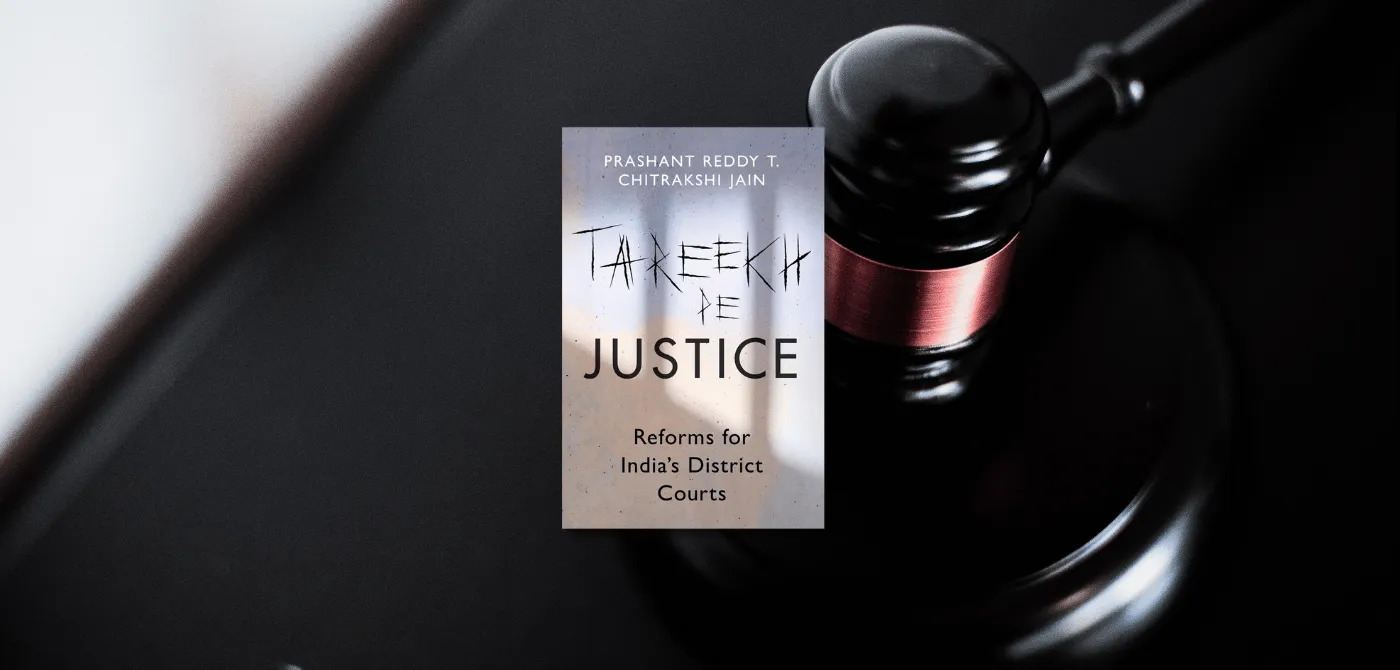The need for judicial reforms is back on the agenda, courtesy worrying reports about the discovery of cash from the residence of a sitting high court judge – reports that are now being inquired into by a committee constituted by the Supreme Court. Perhaps since it is a high court judge in the eye of the storm, most of the opinion pieces have tended to focus the prism of reform upon constitutional courts and the issue of judicial appointments.
These are serious problems worth consideration. But if we think of the judicial pyramid from the perspective of sheer volume, most litigants and their cases will never end up in a high court. It is in the many district courts that countless citizens deal with their individual Sisyphean journeys. They must make their way through arcane language, unclear rituals, prolix documents, and ever-so-many dates of hearings, all in the hope of securing that illusory prize: justice.
The judges are regulated in their conduct not by some clear codes and rules, but by an extremely opaque machinery controlled by respective high courts...
Tareekh Pe Justice: Reforms for India’s District Courts delivers a much-needed re-orientation of the conversation around judicial reforms for the mainstream public. While the title may suggest a focus upon judicial delays and frequent adjournments – captured in the popular discourse by the phrase in the title – the authors’ canvas is broader. They argue that delays and adjournments are symptoms of deeper structural issues in the system.
One such issue they identify is that of service terms of judges in the district judiciary. The recruitment of fresh graduates with no experience as judges, their frequent and unpredictable transfers during service, and opaque and archaic disciplinary mechanisms are three specific problems the authors highlight. Tackle each of these and some progress will be made to improving justice delivery through courts, they say.
The service rules regulating district court judges require them to first serve a probationary period where, effectively, their fitness to discharge office is judged by their superiors by using citizens as guinea pigs. Assuming a judge clears the probationary period, they get onto a ladder which one can climb only by securing points annually, which again gives perverse incentives to game a system rather than focus on delivering justice. The judges are regulated in their conduct not by some clear codes and rules, but by an extremely opaque machinery controlled by respective high courts, with bare minimum respect for basic principles of natural justice such as being afforded an opportunity to answer the allegations.
Such a system does not privilege justice delivery, according to the authors. To progress, judges have to ensure that they do not fall foul of the system. At times they have to take decisions such as adjournments to achieve these objectives. Till this structure remains standing, it is extremely difficult to imagine a robust and citizen-centric judiciary.
There are certain gaps in the argument at times, though. For instance, apart from an older person having more life experience, no other reason is accorded to criticise the recruitment of fresh graduates as judges, and the subjectivity of experience may well make it a debatable quality in any case. However, these are small quibbles in what is an otherwise clearsighted case being made to show how service rules of district judges have a distinct tendency to worsen the delivery of justice for ordinary citizens.
An underlying theme that emerges here is the overarching control exercised by the constitutional courts on issues at the district judiciary level.
The book moves from the discussion on judicial service rules to address a broader array of issues on the theme of delays. Different kinds of solutions have been proposed over time to try and solve the problem of judicial delays. They include the use of technology for gathering data, the filling-up of vacancies, increasing spending budgets, and bringing in court managers. The book cogently explains why these experiments have mostly failed so far.
An underlying theme that emerges here is the overarching control exercised by the constitutional courts on issues at the district judiciary level. The authors demonstrate that control over the issues they identify emanates largely from the Supreme Court, which often becomes problematic because of the vast distance between the court at the apex of the judicial hierarchy and the district court at the foot of that pyramid. They call for decentralising reforms, which according to them would deliver greater success considering high courts are more attuned to the specific practices of each state.
The final section of the book moves to discussing reforms. Three broad ideas are served up here. First, redesign the judiciary to make it look more like the American model with different chains of federal and state courts. This will streamline the structure and allow for better use of judicial time, not to mention have clear chains of authority and command. Second, bring back juries, as it will restore public trust in the system which is ebbing away. Third, make procedural rules important for dispute-resolution, as these are necessary for fairness and predictability in adjudication. Naturally, these suggestions are based on the prejudices and hopes of the authors. Nowhere is this more apparent than their faith in securing better justice through juries, as they themselves admit. Besides the administrative costs of juries, the institution may simply buttress prejudice, rather than rise above it, in a highly divisive society. Recommending juries as a solution for the system, thus, operates on hope more than practicality.
If we are concerned about the values of the judiciary and its independence in theory, we ought to be equally invested in striving for the creation of legal rules which ensure this decisional independence in practice.
At no point before the final chapter is an argument made in the book about the content of procedural laws contributing to delays. The authors tell us that, according to some people, these rules were indeed a problem. Yet, designing judicial authorities where these rules could be ignored in fact worsened the fate of litigants by not only failing to curb delays but also exposing them to arbitrary and inconsistent judicial decisions. Therefore, we should abandon this line of thought and stick to being sticklers for the rules again and invest well to do so. One was left feeling that this conversation required more time and engaging with other perspectives, and in trying to compact a book-length foray into a few pages, some of the impact of the argument is lost.
That there are so few predecessors to Tareekh Pe Justice speaks volumes about how top-heavy the conversation around the judiciary has been in independent India. It is by no means a complete book. Yet if anything, the book reminds us how looking for a silver bullet is precisely the problem. If we desire a better district judiciary, we have to walk the long road of reform. If we are concerned about the values of the judiciary and its independence in theory, we ought to be equally invested in striving for the creation of legal rules which ensure this decisional independence in practice. Bringing service rules for the district judiciary in the same conversation as the collegium can help achieve this. Tareekh Pe Justice helps arm us with some tools to push for this shift and increase chances of restoring a measure of fairness in an increasingly dysfunctional and overburdened legal system.
Abhinav Sekhri is a lawyer practising in New Delhi. When not working or writing about criminal law, he can be found trawling through the archives in search of curious stories from Indian legal history.









